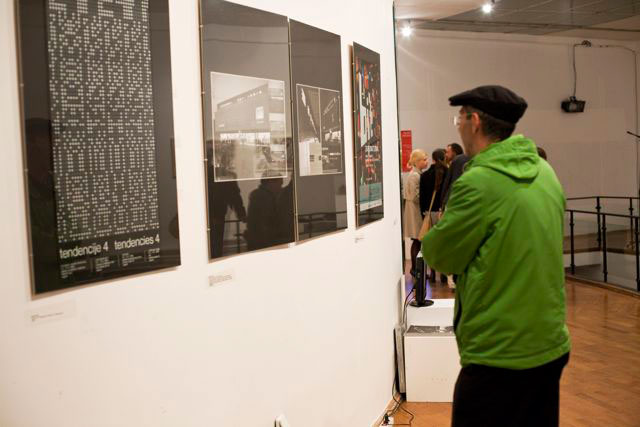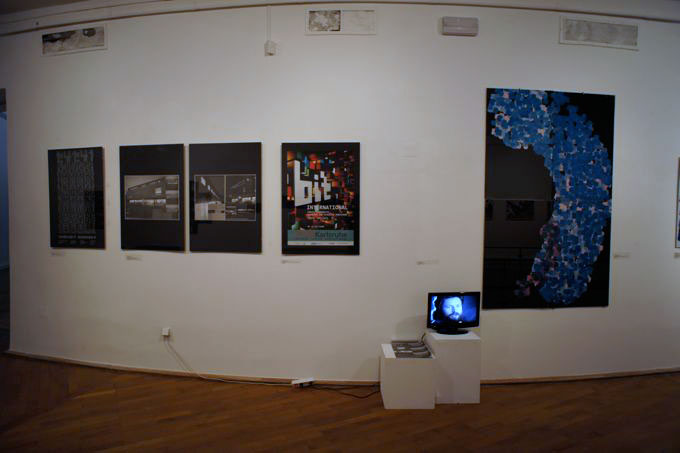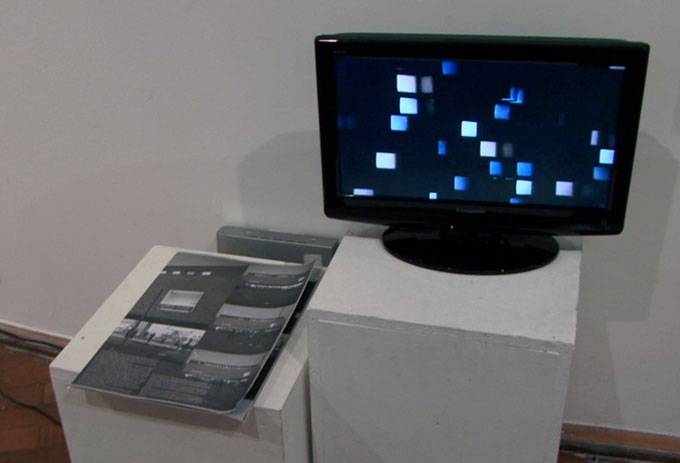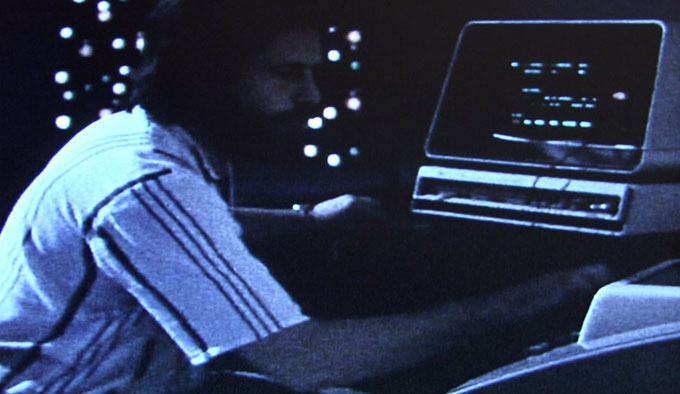1. POSTER - t4 tendencije 4/ tendencies 4, 1969 size (100 x 70) (design Ivan Picelj)
2 . POSTER - “art with us” by Darko Fritz. Hommage to Vladimir Bona?i?’s installation on the Nama, building at Kvaternik Square in Zagreb, 1969-2009. art newspaper (publisher: UIII- Association for interdisciplinary and size 2 x (42 x 59,50) intercultural Research- Sonja Lebos) (front and back)
3. POSTER - bit INTERNATIONAL - [ Nove ] tendencije. Computer and visual research, Zagreb 1961-1973. ZKM ?Media Museum, 2008/2009. (Dynamic Object GF. E(16, 4) –NS C M (detail) size (84 x 59,50)
4. VIDEO one man show, Jerusalem, may 1975 DVD player




Biographie
Vladimir Bonacic (1938 – 1999) worked in the Croatian National Research Institute Ru?er Boškovic in Zagreb from 1962, where he headed the Laboratory of Cybernetics from 1969 to 1973. He earned his PhD in 1968 in the field of pattern recognition – visual and audible representation of hidden data structures. In 1968 he began his artistic career under the auspices of the international art movement and network New Tendencies (NT), at the Gallery for Contemporary Art of Zagreb, which had pushed for his inclusion.
His artworks were made following exact mathematical methods (the algorithm of which is contained in the title of the work), while viewing them leads to cognitive insights, through observing sequences of visualized symmetric or asymmetric compositions of the mathematical algorithm of the Galois field (a system of pseudorandom algorithms). The “Galois field,” named after mathematician Evariste Galois (1811 – 1832), was an overall inspiration to Bonacic. In abstract algebra finite fields are known as Galois fields and studied by him in connection with his work on the roots of polynominal equations.
As part of the Tendencies 4 exhibition in 1969, Vladimir Bona?i?, as well as 15 gallery exhibits, also showed an installation in a public space, a 36-metre-long, computer-generated light installation DIN. PR 18 at Kvaternik Square in Zagreb. Installation consisted of 18 elements, where each element had 5 x 3 grid light matrix. The installation performed a light show that flickered patterns of the irreducible 18th degree polynomial. At that time the square was rather dark with little public lighting, so the installation acted also as an additional illumination. Art critic and curator Zelimir Košcevic published in a daily newspapers an article that brings an affirmative evaluation on the ‘message’ of this public light system used for an aesthetic but not commercial purposes as of companies light signs and that just start to appear recently at Zagreb’s city center, i.e. as a critique of consumer society. As well Košcevic finds that such a public installation shows an improvement of idea of democratization of art within the context of the NT movement. For his participation at the Tendencies 4 Bonacic was awarded one of the prizes for “computer and visual research”. The jury consisted of Umberto Eco, Karl Gerstner, Vera Horvat-Pintari?, Boris Kelemen and Martin Krampen appreciated “the harmony between the mathematical consequences within the programming and the visualizing of the process resulting from the programming. We praise especially Bona?i?’s new approach entailing the solving of problems by including a picture and not a number as a parameter, rendering possible thereby a solution of much more complicated problems.”
DIN. PR 18 was changed in 1971 with more complex dynamic object DIN. PR 16. This work take exact place at the top of the building of the previous one and occupy an extra space within the facade.
Bonacic probably, using his computer generated installations in the public space, realized, although briefly, the utopia of NT that were developed in beginning of 1960s by Matko Meštrovic and other NT theoreticians: the work is exact, science was humanized, art was rendered scientific, the work was realized by using machinery and programming intentional software and constructing new hardware, it can be multiplied, it is socially active and democratic – it even had a utilitarian function at the level of city lighting. (Excerpt from text by Darko Fritz)